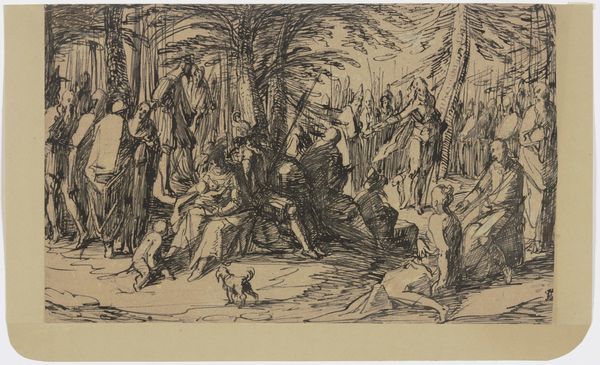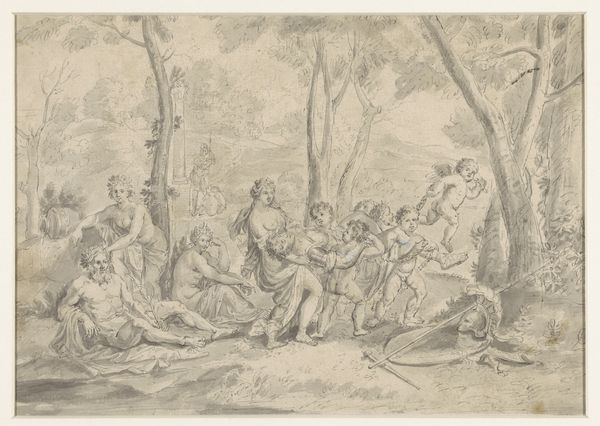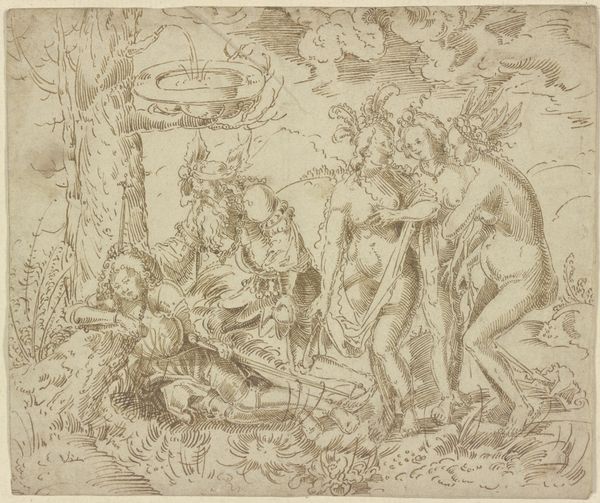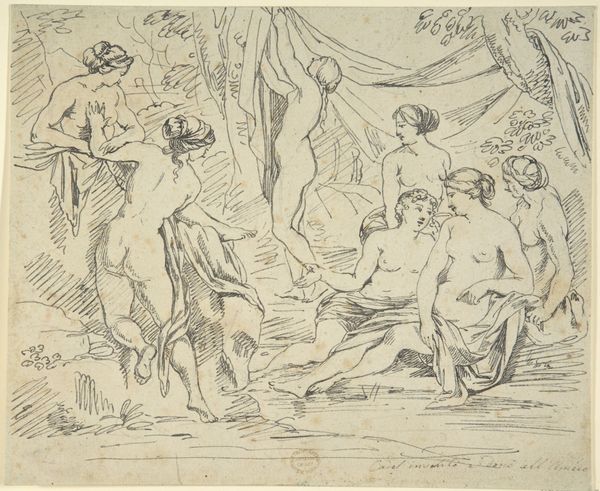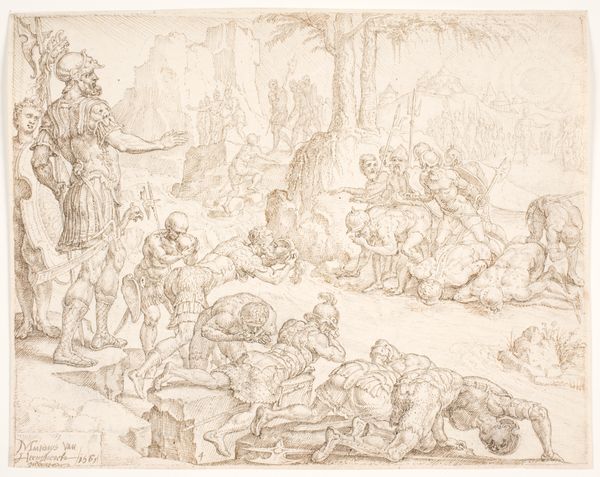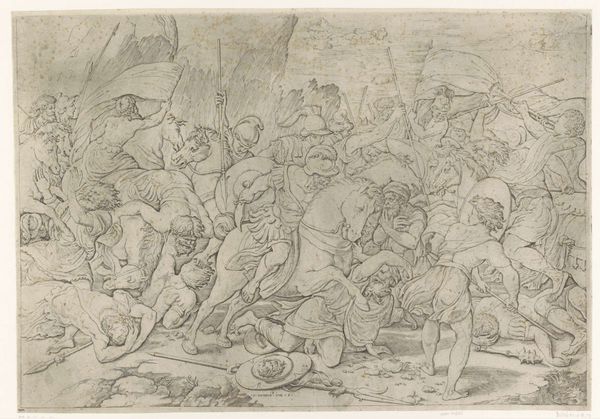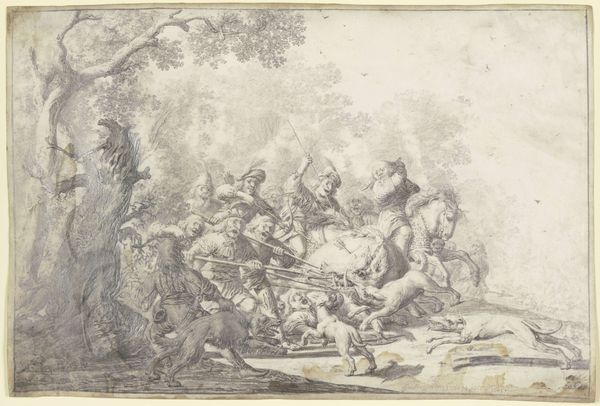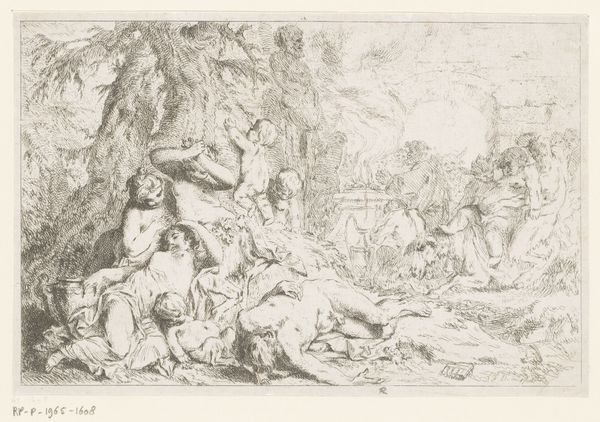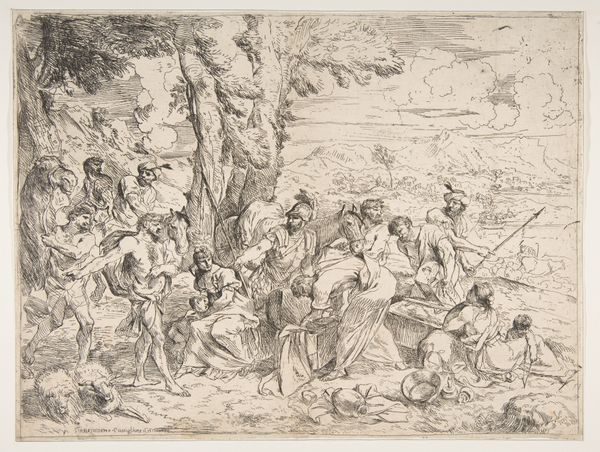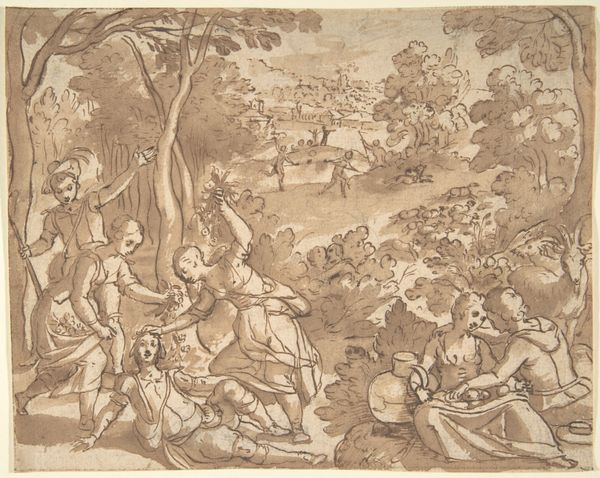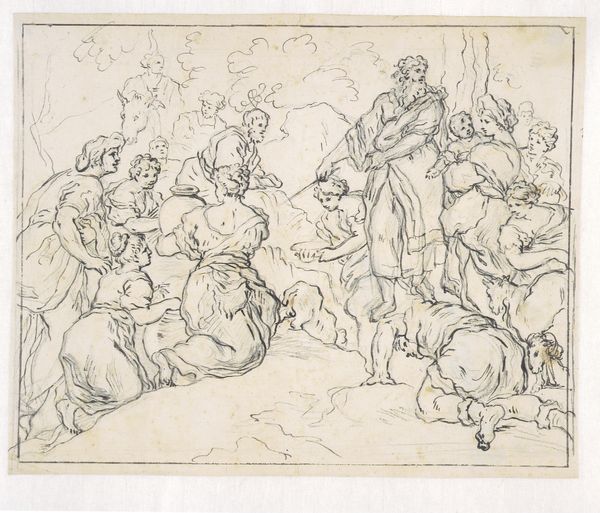
Apollo and the Nine Muses surrounded by Poets on Mount Parnassus 1620 - 1674
0:00
0:00
drawing, print, ink, pen
#
drawing
#
narrative-art
#
baroque
#
ink painting
# print
#
landscape
#
figuration
#
ink
#
pen-ink sketch
#
pen
#
history-painting
Dimensions: sheet: 11 1/16 x 14 7/16 in. (28.1 x 36.7 cm)
Copyright: Public Domain
Editor: This is Karel Skréta’s "Apollo and the Nine Muses surrounded by Poets on Mount Parnassus," dating roughly from 1620 to 1674. It's an ink and pen drawing. The mood feels...classical and ethereal, but also kind of restless. What do you see in this piece, particularly considering the historical context? Curator: I see a deliberate construction of power and influence. Skréta is aligning artistic creation with divine authority. Apollo and the Muses weren't just symbols of art; they were gatekeepers. Think about who was allowed into those circles, and who was excluded. Consider the socio-political implications of defining “good” art and “worthy” poets based on potentially biased classical ideals. Editor: So, the drawing isn’t just celebrating art; it’s also outlining the boundaries of artistic power? Curator: Precisely. It raises questions about access and representation, who gets to be a poet, who gets to be immortalized in art, and whose stories are privileged in cultural narratives. Look at the expressions on the faces. Are they unified, or is there a sense of hierarchy and judgment? Editor: I hadn’t thought about it that way before. It’s like the drawing is also a comment on the social structures of artistic patronage at the time, the idea that you needed access to these figures, these "Muses", to be recognized. Curator: Exactly. Skréta is visualizing the dynamics of power within the art world. The drawing then becomes not just a depiction of a mythological scene, but a document of its time, highlighting who held the keys to cultural legitimacy. What are the long-term effects of this legacy? Editor: I'm beginning to see the image more critically now; less as a celebration of art, more as a mirror reflecting societal hierarchies and biases. I guess I'll consider this Baroque drawing more in light of social commentary and power dynamics. Curator: Good. Recognizing those underlying structures lets us re-evaluate our relationship to artistic expression itself, both past and present.
Comments
No comments
Be the first to comment and join the conversation on the ultimate creative platform.
